When we use the term "stainless," we are trying to describe materials with resistance to staining, rusting, and pitting in air. The term "steel" refers to an iron-based alloy, usually with carbon and other alloying elements. In fact, steel is an iron-carbon alloy. For this reason, we can say that stainless steel is the "two lies" material because it is not a steel (usually does not have carbon) and, in some circumstances (extreme conditions depending on the material), is not stainless. What is true is that a stainless steel has a certain level of corrosion and oxidation resistance (higher than any other family of iron-based alloys), and we call them "steels" because they have historically been held to the standards of the steel family.
What assures the level of capability of these iron-based alloys is the 12% (by weight) of chromium in the solution of the alloy. It is important take into account that this is "in solution." This means that if chromium is forming carbides or nitrides, the level of chromium in solution decreases and the stainless capability of the material is strongly reduced. Owing to the special manufacturing methods of powder metallurgy (PM) (in general) and metal injection molding (MIM) (in particular), when there are unusually slow cooling rates after sintering, the formation of chromium carbides in the range of temperatures between 400℃ and 800℃ can take place (the so-called sensitization process), leading to a lack of corrosion performance in these materials. In the same way, sintering atmospheres containing nitrogen are particularly suitable for the formation of chromium nitrides, leading to the same perverse effect.
The main consequence of the possible sensitization of stainless steels during the cooling step after sintering makes MIM technology particularly attractive. First, the original carbon content in the powder should be very low (L grades, under 0.03% by weight), and the debinding should be complete if one desires no residual carbon in the steel, which could reduce the corrosion performance of the final part. Even the martensitic grades, which in the wrought grades have some carbon in their composition, do not have any (or very low) carbon in the MIM grades and therefore avoid this problem. In this sense, they could be considered a sort of ferritic grade with low chromium.
The main advantage of MIM in producing stainless steels is the enormous freedom to produce highly complex parts of relatively small sizes, with highdimensional tolerance and mechanical properties very close to the wrought grades (thanks to the high level of densities that can be reached by MIM). A small reduction in the corrosion performance due to the inherent characteristics of the MIM process (debinding and sintering) is rarely an issue, making the MIM product highly competitive. This is true because stainless steel is one of the first materials to be industrially produced by MIM. Despite the increasing incorporation of new materials in MIM parts production today, stainless steels continue to dominate MIM global market with about 50%, 42%, 65%, and 69% market share, so we can consider, at least in volume, that stainless steels are the most important metal produced by MIM.
Stainless steels can be divided into grades according to their microstructure. The main commercial grades belong to three families: austenitic, ferritic, and martensitic. In general terms, austenitic steels are Fe-Cr-Ni alloys, with the most extended alloys being the grades with 18%-20% Cr (wt) and 8%-10% Ni (wt). Ferritic steels have high Cr contents (and are free of carbon), and the conventional martensitic grades used have >12% Cr (wt), with some amount of carbon to allow the steel to be hardened by martensitic quenching. Some PM grades (including some MIM grades) do not have carbon, making them a sort of ferritic grade with less chromium. There are two other special stainless steels grades, duplex and phase-hardened (PH) stainless steels. The preferred processing route of alloys of these two families is MIM. The so called duplex stainless steels (that means a ferritic-austenitic microstructure) can be obtained by premixing powders of austenitic and ferritic stainless steel grades. Some duplex alloys can exhibit higher corrosion resistance than austenitic grades and their properties fall between austenitic and ferritic grades. Their main attraction is their combination of properties, with higher strength and particularly reduced price compared to austenitic steels. The PH stainless steels can be strengthened by solution treatments, but in order to fully benefit from their superior mechanical properties, achievement of full or near full densification is required. Additionally, thanks to the REACH regulation, a new family of stainless steels, the so-called nickel-free austenitic stainless steels, have been created and are especially applicable for medical and skin contact applications.
Table 18.1 displays some possible values (estimated) obtained for various mechanical properties of the different families of stainless steels. We have to take into account that a wrought stainless steel has a density near 8 g/cm (depending on the alloying contents), with the density of a conventional PM stainless steel being about 90% of this theoretical density, and the possible density of MIM stainless steel on the order of 95% of this theoretical density (as an average value, being lower for martensitic grades and higher for PH and some austenitic grades).
Table 18.1 Mechanical properties comparison of stainless steels manufactured using different methods
Grade | Tensile strength (MPa) | Yield strength (MPa) | Elongation (%) | Hardness |
Austenitic | ||||
Wrought | 520 | 210 | 40 | 90 HRB |
PM (press and sintered) | 310 | 126 | 16 | 65 HRB |
MIM | 415 | 170 | 38 | 80 HRB |
Ferritic | ||||
Wrought | 450 | 200 | 25 | 90 HRB |
PM (press and sintered) | 270 | 120 | 10 | 65 HRB |
MIM | 360 | 160 | 24 | 80 HRB |
Martensitica | ||||
Wrought | 540 | 350 | 20 | 100 HRB |
PM (press and sintered) | 325 | 210 | 8 | 70 HRB |
MIM | 450 | 290 | 19 | 90 HRB |
Duplex | ||||
Wrought | 600 | 550 | 15 | 30 HRB |
PM (press and sintered) | 360 | 330 | 6 | 20 HRB |
MIM | 480 | 440 | 14 | 27 HRB |
Phase-hardenedb (PH) | ||||
Wrought | 1400 | 1200 | 10 | 45 HRB |
PM (press and sintered) | 840 | 720 | 4 | 32 HRB |
MIM | 1120 | 960 | 9.5 | 40 HRB |
aQuenched and tempered.
bSolution-hardened.
As can be seen in the table, MIM mechanical features are closer to the properties of the wrought steels than conventional PM steels, especially the elongation, which is much more sensitive to the porosity than the tensile features and hardness. The corrosion performance follows a similar behavior.
Stainless steels have played an important role in the development of MIM technology, and for this reason, many of the theoretical studies regarding the technological parameters were developed with stainless steels. The reason for this was the larger range of applications for this family of materials, which was more than any other material in the period that MIM was being developed.
All of the steps of the process were investigated, including the influence of binder components and the rheological parameters. Of particular interest were those works that studied the effect of surface additives on the interaction with the other binder components and the rheology of the feedstock. Thanks to these kinds of studies, the use of surface agents like stearic acid has been widely adopted in numerous feedstock formulations.
An important set of studies was performed to understand the influence of the morphology of the powders (rounded or spherical, from water-atomized powders or gasatomized powders) and the size and granulometric distribution (which can affect the packing characteristics). The morphology of the particles is an important factor that influences the rheology, so the availability in the market of water-atomized and gas-atomized powders of different sizes and distributions allows study of this important factor. Using similar sizes, the results obtained for both kinds of powders were very similar, although they were slightly better for gas-atomized powders. One possible advantage of using the water-atomized powders is that, when mixed with gas-atomized powders, the shape retention during sintering and dimensional control can be improved. Also, water-atomized powders are cheaper than their equivalent grades gas atomized.
Even more important to the rheology than the morphology is the size of the particles. By using different gas-atomized powders with different sizes, it was found that up to an average size of 45μm, there is no important change in the properties, but with larger particle sizes, the packing features can be improved. Large particles can produce some negative effects, like higher sintering temperature, galling in the screw check ring of molding, worse surface finish and worse shape retention, but with the benefit of lower cost. Most of the studies were performed with the most-used powders (especially the 316L grade), but there are some works related to PH steels and special processes such as μMIM. Powder loading is another important factor affecting rheological behavior and technological parameters. The use of nanopowders is beneficial to obtain better surface roughness and dimensional accuracy in, e.g., μMIM, however, due to their high surface areas, low solid loading and high feedstock viscosity are obtained. To overcome these issues, nanopowders can be mixed with conventional micro powders to create bimodal powder distributions.
In the MIM stainless steel feedstock, all possible binders used in any other materials can be used, especially wax-based systems (paraffin wax, microcrystalline wax, and natural wax) and thermoplastic-based systems (polyacetals, polyethylene, and polypropylene). Additionally, even thermosetting resin-based systems can be used. Binder formulations attempting to substitute conventional synthetic polymers with biosourced polymers (thermoplastic starch and cellulose derivatives, polylactic acid, and so on) can also be implemented in stainless steel MIM.
Today, it is possible to find any conventional stainless steel grade (of all different stainless steel families) as a powder. Different powders with different characteristics, sizes and morphologies are all commercially available. The most commonly used powders are gas-atomized with sizes under 20μm; however, water-atomized powders are also available. Not only is it possible to find powders of most grades, but feedstocks with different characteristics are also available. Feedstocks that are catalytically debound, thermally debound and solvent (including water)-debound are also commercially available. Further, a wide range of powders and feedstocks for μMIM is now on the market. For example, Table 18.2 shows the stainless steel powders most commonly used to produce feedstocks.
Table 18.2 Most commonly used stainless steel grades in MIM
Grade(AISI/SAE/MPIF) | Approx. composition | Features | Code | DIN standard | UNS standard |
AISI/SAE/MPIF420 | Fe-0.2%C13% Cr (Mn<1%, Si<1%) | Martensitic grade/ hardenable, ferromagnetic | X20 Cr 13 | DIN 1.4021 | UNS S42000 |
AISI/SAE/MPIF430 | Fe-16%Cr (<0.08%C, <1% Mn) | Ferritic grade/ ferromagnetic | X6 Cr 17 | DIN 1.4016 | UNS S43000 |
AISI/SAE/MPIF316L | Fe-17%Cr12% Ni-2% Mo (C<0.03%, Mn<1%, Si<1%) | Austenitic grade/ nonmagnetic | X2 CrNiMo 17 13 2 | DIN 1.4404 | |
SAEJ467/MPIF17-4PH | Fe-16%Cr4% Ni-4% Cu-0.3% Nb (C<0.07%, Mn<1%, Si<1%) | PH grade/ ferromagnetic hardenable | X5 CrNiCuNb 17 4 | DIN 1.4542 | UNS S17400 |
There are some "duplex" grade feedstocks available based on austenitic compositions, but with less nickel to allow for the formation for a duplex microstructure (ferritic-martensitic) when cooling from sintering temperature. The higher cost of these grades (owing to lower demand) and the fact that the duplex microstructure can be obtained by mixing ferritic and austenitic powders, are the main reasons why these grades are not extended to so many applications. The presence of nitrogen, by using a nitrogen-rich atmosphere, can play an important role in the formation of a duplex microstructure, with the expected reduction in the corrosion performance.
After the feedstock behavior and its injection, binder removal is a very important topic. The debinding time, which is highly related to the industrial parameters and binder composition, influences all of the parameters. Most stainless steels produced by MIM are debound by following one of the routes discussed in the following section.
Catalytic debinding
The "polyacetal binder systems" should be debound in a gaseous acidic environment (usually highly concentrated nitric or oxalic acid) at a temperature near 120℃ (a temperature slightly lower than the softening of the bond system). The acid acts as a catalyst in the degradation of the polymer binder system. All of the reaction products are burned in a natural gas flame at temperatures above 600℃. This debinding method is very efficient and produces a highly interconnected porosity after short times (about 2 or 3 h depending of the size of the component). In Europe, this is the most extended method used to produce parts. The main drawback of this method is the combination of using aggressive acids (as nitric) with relatively high temperatures, which promotes corrosion of the surrounding equipment.
Solvent debinding
To remove the binder using this method, the binder composition should include a constituent that can be dissolved in a liquid at a low temperature, such that a network of interconnected porosity is formed in the part while immersed in the solvent. Some possible solvents used in MIM are acetone, ethanol (and other alcohols), hexane and water. With the exception of water, all of the other options (organic options) can produce health problems if their use is not well regulated. Solvent debinding needs more time than catalytic binder removal, but the investment costs and environmental problems (especially with water) are much lower.
Thermal debinding
The binder system can be eliminated by heating the feedstock at temperatures where the main polymers decompose or degrade. The temperatures used can reach 800℃ depending on the binder system, and the required times are longer than those of catalytic debinding. To reduce these long times, a combination of solvent and thermal debinding can be used.
After debinding, sintering is the next critical step. In this step, there are important differences between the different stainless steel grades. In the austenitic and ferritic grades, sintering should avoid any carbon or nitrogen contamination due to the possible sensitization of the steel (especially in the austenitic grades), but in the PH and martensitic grades, additional problems have been found. By controlling the sintering temperature and the further heat treatments, different amounts of δ ferrite can be obtained in the austenitic grades at levels up to 8%, the presence of this phase improves the mechanical properties, importantly without decreasing the corrosion performance. Sintering performance of these steels can be predicted by modeling.
In the PH steels, sometimes the main objective is to achieve the highest tensile features, and in this sense, some carbon content can be allowed to improve these properties. The debinding process can be used for this purpose; thus, some binder left in the brown part can provide extra carbon content during sintering. Nevertheless, some studies have shown that an increase in carbon interferes with precipitate formation and thus lowers hardness. In this respect, carbon should be avoided in PH stainless steels; Nb is used to grab the carbon and form Nb carbides, thereby preventing the carbon from interfering in the precipitate hardening process. The carbon content control can produce sintering in a δ-γ field, thereby improving the self-diffusion effect (which is much higher in ferrite than in austenite) and, as a consequence, the densification. After quenching, a duplex microstructure martensite-δ ferrite with more ductility (and slightly lower tensile strength) is produced. The same effect can be produced in austenitic grades with the addition of Mo. These steels (PH) can, under good sintering conditions (up to 1380℃/90min in an inert atmosphere), reach densities of 7.7 g/cm3 , ultimate tensile strength (UTS) values of 1275MPa, and 55% elongation with good corrosion performance. Noninert atmospheres, such as N2-H2 mixes, can reduce the corrosion performance.
The most critical stainless steel grade from the point of view of sintering is the martensitic grade. Despite the fact that, with some care during sintering, it is possible to achieve a good microstructure of rounded chromium carbides in a martensitic matrix of high hardness, there are inherent problems with this family of steels during this part of the process. The densification rates at temperatures below 1200℃ are consistent with solid-state diffusion and are, as a consequence, extremely low. However, once the liquid phase appears at higher temperatures, densification takes place quickly. The problem is that once the liquid phase appears at a relatively low temperature, the amount of this liquid phase becomes large in terms of volume percentage. A small increase in temperature leads to a significant amount of liquid phase present, which has some negative consequences, like grain growth, slumping, no uniform densification and swelling. All these negative effects can be enhanced due to the presence of carbon. Therefore, the effective sintering window is very low, on the order of 10℃, which causes technological problems for the industry. This sintering window can be slightly opened by using a nitrogen addition. Catalytic debinding, used with polyacetal base binders, can provide this extra nitrogen. What is common to all grades is that the finer the powders are, the more enhanced is the sintering.
Conventional PM stainless steels are sintered in different kinds of furnaces (either continuous furnaces, usually walking bean or pusher furnaces if high temperatures can be reached, or batch furnaces) and many types of atmospheres, even nitrogen-based atmospheres, which lead to a reduction in the corrosion performance. MIM products based on stainless steels have a higher density that those obtained by conventional press and sintering PM methods and have a slightly higher added value. As a consequence, care must be taken when sintering temperature is higher, and this process is usually conducted in batch furnaces with an extremely low dew point and in nitrogenfree atmospheres, such as hydrogen or a vacuum.
The presence of nitrogen in the atmosphere (dissociated ammonia or artificial mixes of nitrogen-hydrogen) can produce nitrogen absorption, leading to chromium nitride (Cr2N) precipitation with the accompanying chromium depletion and deterioration of corrosion resistance. The formation of these chromium nitrides is promoted, especially in the range of 500-600℃, upon slow cooling from the sintering temperature. Thus, nitride formation can be decreased with very rapid cooling rates (>200℃/ min). However, these cooling rates are not always attainable. A hydrogen atmosphere or a vacuum represent the most suitable alternatives, and in both cases, extremely low dew points can be achieved to guarantee a good sintering behavior of the stainless steel. The main problem when using a vacuum is the possible depletion of chromium, which can result in a reduction of the corrosion performance, but this can be reduced with a back-filling gas during sintering at some partial pressure (argon is typically used). Different works deals with this topic of using nitrogen-based atmospheres to enhance the mechanical properties with the risk of decreasing the corrosion performance.
The sintering temperature range used in the MIM of stainless steels varies from 1200℃ to 1350℃, and sinteringtimes range from 20to 60min. Insufficient sintering, eithertoo short or at too low a temperature, will result in sintered parts showing insufficient bonding, original particle boundaries, and sharp, angular pores. The sintering temperature is highly conditional on the solidus temperature of each grade. The chosen temperature should be slightly higherthanthe solidus temperature to avoid a massive liquid phase that can produce distortions in the shape of the sintered part. As previously explained, sintering of the martensitic grades can produce different technological problems.
The sintering process of some stainless steels can be assisted by microwaves to accelerate densification kinetics, enabling rapid internal heating and lower peak temperature. The processing time and required energy are substantially lowered and finer microstructures can be achieved. MIM specimens of 17-4PH, 316L, and 434L stainless steels are suitable to be consolidated by microwave assisted sintering. Powder morphologies, heating rates and part positioning in the furnaces should be carefully considered to optimize densification and avoid microstructure heterogeneities during sintering assisted by microwaves.
Metal injection molded stainless steels can attain higher mechanical properties than conventional PM (press and sintered) steels, mainly due to the higher density that can be achieved, but their properties are slightly worse compared with their wrought counterpart grades (Table 18.1), except if postsintering treatments are applied, like hot isostatic pressing, when full density is obtained. Despite the small porosity obtained in MIM processes, the dynamic properties of these steels, in particular the fatigue properties, are strongly affected by porosity, especially over 8%. Porosity also has a detrimental effect on corrosion properties.
Controlling porosity is thus a critical issue, although the porosity of MIM stainless steels can be enhanced with space holders for some special applications (such as heat exchangers, medical implants, filters, and electrodes in biological and chemical reactions). Finally, MIM stainless steels can be welded under similar conditions to wrought stainless steels.
Sintering improvements based on boron additions
It is well known that in conventional PM stainless steels, boron additions can improve the sintering behavior through liquid phase sintering, but these also cause a decrease in ductility and loss of shape. There have been some related attempts in the field of MIM. Boron can be added as elemental boron, as FeB ferroalloy or as nickel boride. As with conventional PM, an increase in the density is produced, and as a consequence, an increase in tensile features (except the elongation and fracture toughness) is realized. The reduction in ductility is explained based on microstructural evaluations. In all the cases, a continuous brittle boride phase, depending on the addition, is formed at the grain boundaries.
Nickel-free stainless steels
The REACH regulation, which deals with the registration, evaluation, authorization and restriction of chemical substances, forced the elimination of nickel, especially in powder products. This regulation promoted a great deal of research and development on new nickel-free stainless steels, including wrought steels, PM steels and MIM steels. The first attempt to reduce nickel was by introducing another gamma stabilizer element. Today, fully nickel-free steels are available that can compete with the PH grades and have a processing route that is quite similar because these high-nitrogen steels should be solution-annealed to obtain a fully austenitic microstructure free of irregular nitrides. Before this treatment, these steels can have a microstructure of gamma-austenite and alpha-ferrite and a network of Cr2N nitride.
The P.A.N.A.C.E.A. steel (protection against nickel allergy, corrosion, erosion, and abrasion, Fe-17Cr-10Mn-3Mo-0.49N-0.2C) was developed for this purpose, especially for MIM (polyacetal binder). This is a nickel-free austenitic stainless steel with excellent corrosion resistance and superior properties compared to 316L.
Metal matrix composites based on stainless steels
In conventional PM, some attempts have been made to produce metal matrix composites based on stainless steels to improve wear and corrosion behavior. MIM is a suitable method for producing these kinds of composites. A composite based on 316L with improved hardness and wear resistance was developed by Gulsoy.
The development of syntactic foams of 316L formed by addition of glass or ceramic hollow filler allow for the creation of composite-structures with reduced density and improved strength. Hydroxyapatite316L composites can be produced by MIM to improve biocompatibility of medical implants while achieving a good mechanical performance.
μMetal injection molding (μMIM)
In the same way that stainless steels have likely been the key material in the development of MIM as a technology, they are playing the same role in μMIM. μMIM is a process to produce μ-devices at a low cost and with high performance and good dimensional control. This method allows the production of parts with no more than a few hundreds of microns in the large dimension, whereas previously only sizes of <100μm in the large dimension were possible. Sometimes, some microparts have dimensions <30-40μm thus, if the powder used has an average size of 5μm, there can be a maximum of six particles in this direction. As can be deduced, the main constraint of this technology is the size of the particles. This is why μPIM was first developed with ceramics (that usually have a lower particle size), and one of the trends of the technology is toward using nanopowders with dimensions of <100 nm.
This technology has many challenges that can be met by modifying some of the technological parameters that are commonly used in MIM. It is essential to have a suitable binder system with low viscosity, providing for easy mold filling and higher green strength, suitable molding parameters such as higher melt and mold temperatures, and of course, particle sizes smaller than those used in conventional MIM. To improve the performance of μMIM, additional material and process development will be carried out. Further, modeling tools must be involved in any development, and fine metal powders (even close to the nano level) should be used.
Two-color MIM
To produce parts with the two-color MIM technology, many technological problems must be overcome, the main one being controlling distortions during heating, sintering and cooling produced by the possible different thermal expansion coefficients of the two injected materials. In this sense, one interesting possibility that uses stainless steels of different grades is to base the mixture on steels with different magnetic characters while maintaining similar thermal characteristics. Combinations of feedstocks of 316L and 17-4PH or 314 and 430 stainless steels can be coinjected based on the former development. Some other possible combinations comprise stainless steel with other material families. A composite material based on the coinjection of 316L and Ti-6Al-4V feedstocks. The possibilities of twocolor MIM using stainless steels is not limited to a combination of two metallic materials. It is also possible to use cemented carbides or yttriastabilized zirconia.
Stainless steels are the most important material (at least in terms of tones produced) in MIM technology, as has been described. It is not easy, however, owing to lack of information, to know what the breakdown of applications is. Analyzing different sources, the breakdown can be approximated as shown in Fig. 18.1. As can be seen, the highest market share is occupied by information technologies and communications (ITC), a market which is growing very quickly. Some important parts developed in this market include some decorative applications (push buttons, rocker switches for mobile phones, original equipment manufacturer, logo, e.g., Apple, 316L polished), internal stiffening frames (mobile phones, 17-4PH), hard disk drive (computers, 17-4PH), and hinges (laptops, mobile phones, 440 and 17-4PH).
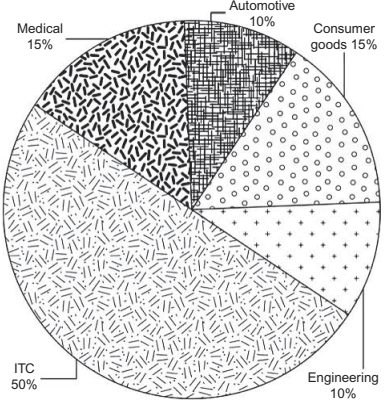
Fig. 18.1 Approximate breakdown of the stainless steel applications in MIM in the world market
Fig. 18.4 demonstrates one clear example of how stainless steels made by MIM can fulfill the most stringent requirements in different fields of material performance. This is the case with the prosthetic knee joint shown. The MIM parts illustrated work together as a unit within a prosthetic knee joint. They protect the knee joint from accidental flexion and serve to transmit power while stretching or bending the knee. The operational demands on the components are stringent, as patient safety is critical. Given these requirements, with the need for corrosion resistance, high strength and an attractive surface appearance, viable parts can only be guaranteed by MIM technology.
Fig. 18.5 shows a door lock casing for domestic hardware made of 310N. This part is a relatively high weight (in the MIM field), 96 g, but provides a good demonstration of the excellent flatness and precision achievable through this technology. This part substitutes for another made of Zamak (a die-cast zinc alloy). By manufacturing the part in stainless steel, the end-user benefits from an improved fire safety classification.

Fig. 18.2 Angle plug for cable connector in the automotive industry (0.45 g, 17-4PH)
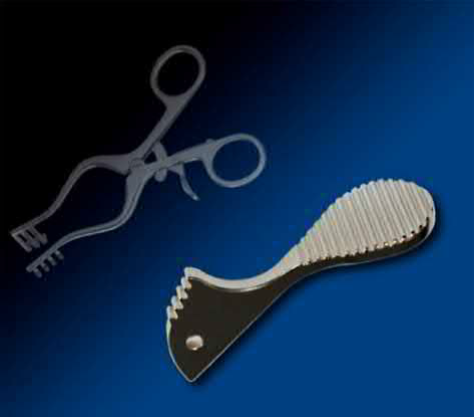
Fig. 18.3 Half shell (316L, 4.7 g)
In Fig. 18.6, another interesting application in the medical sector is shown (MIM endo tips with 50 and 100μm projections on the top section of the tip). This makes it possible to eliminate the need for diamond coating.
Finally, Fig. 18.7 shows the MIM option for a very difficult part (a highly precise MIM mechanical part of a quartz watch using 316L micrograin powder). The part has a complicated shape, which requires very precise dimensions (it should be assembled with other precise parts).
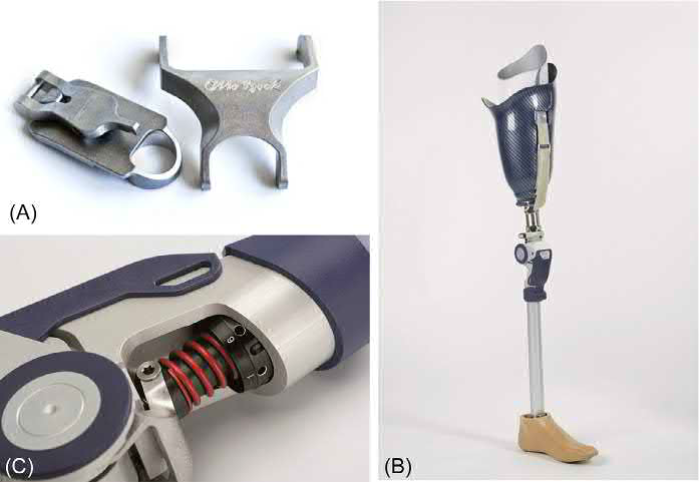
Fig. 18.4 (A) MIM parts made of 17-4PH. (B) Otto Bock prosthetic knee joint 3R93. (C) detail
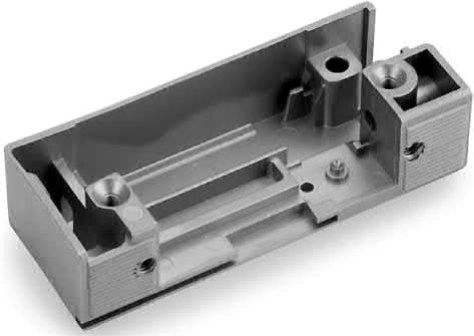
Fig. 18.5 Door lock casing for domestic hardware made of 310N (96 g)
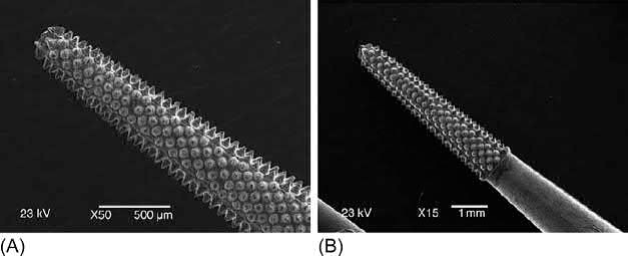
Fig. 18.6 MIM endo tips having (A) 50μm and (B) 100μm projections on the top section of the tip
Contact: Cindy Wang
Phone: +86 19916725892
Tel: 0512-55128901
Email: [email protected]
Add: No.6 Huxiang Road, Kunshan development Zone, JiangsuShanghai Branch: No. 398 Guiyang Rd, Yangpu District, Shanghai, China